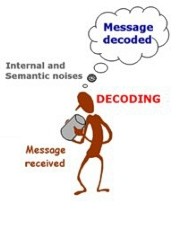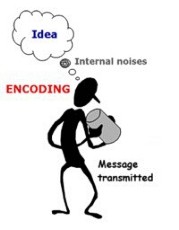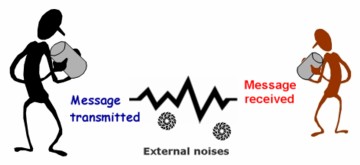Verbal Communication Model | ||
|
An Idea The first pre-requisite is that you have something to say – an "idea". Are you clear as to what you want to communicate?
Next, you have to keep the target recipient in mind. Does the recipient understand the words used? Does the recipient have the maturity and enough experience to understand what is being communicated? The apostle Paul took special efforts to ensure the reception of the gospel message. Though he was entitled to financial support (1 Cor. 9:3-5), he did not exercise this right. Instead he worked and supported himself so as to eliminate charges of selfish motives thereby facilitating the communication of the gospel (1 Thess. 2:9). Coping with Noise in the Encoding Process There may be internal noises (i.e., your attitude about your position and your feelings) that interfere with the encoding process so much so that the message transmitted is NOT your intended idea. Recognizing this danger, what can you do to encode your idea clearly? Handling Noises in the Environment and in the Recipient There are noises that distort the message in transmission and decoding. Effective communicators take these noises into consideration when they are communicating.

Keep in mind and apply the following model whenever you are communicating. We have succeeded in communicating only when the message decoded is the same as the original idea.  We have touched on one aspect of communication … talking. But communication is circular in nature … we are not just transmitters of messages, we are also recipients of messages. We all have difficulty communicating positively with others when feelings are involved – either your own or their’s. We will look at how we can improve our listening skills in another article. |

